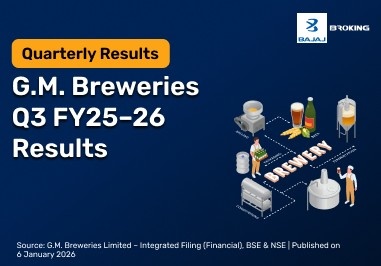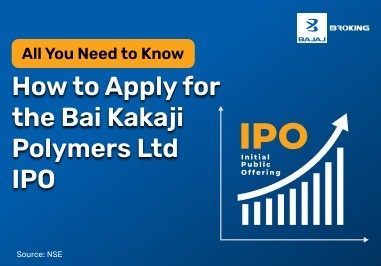Industry and sector
Tata Motors operates within the automotive industry, which forms a crucial pillar of India's manufacturing and economic framework. This sector includes the design, development, manufacture, marketing, and servicing of motor vehicles. Tata Motors’ portfolio spans across passenger cars, commercial vehicles, and electric mobility solutions, placing it among one of the diversified automobile manufacturers in the country. It also enjoys a strong global presence through Jaguar Land Rover, offering luxury vehicles in competitive global markets.
The automotive sector is segmented into Original Equipment Manufacturers (OEMs), suppliers, and after-sales service providers. Tata Motors falls under the OEM category, building vehicles from scratch and supplying to domestic and export markets. It faces competition from Maruti Suzuki, Mahindra & Mahindra, Hyundai, and international players. The company also aligns with India’s automotive mission for cleaner, safer, and smarter mobility through initiatives in electric vehicles and alternative fuel technologies.
Tata Motors contributes significantly to employment generation, industrial growth, and innovation in India. As global automotive markets shift toward electrification and automation, Tata Motors is investing in connected vehicles, green technology, and smart manufacturing to maintain leadership in a rapidly evolving sector.
Key business areas
Tata Motors operates across several verticals, offering an integrated portfolio that serves individual consumers, fleet operators, and governments. Its primary business areas are segmented into five categories: passenger vehicles (PV), commercial vehicles (CV), electric vehicles (EV), luxury vehicles (through Jaguar Land Rover), and ancillary services including financing and telematics. This structure allows the company to manage cyclical variations across segments while maintaining steady revenue inflow.
In the passenger vehicle segment, Tata Motors offers models like Altroz, Punch, Nexon, and Safari. In commercial vehicles, it is the market leader with a wide range of trucks, buses, and vans catering to logistics, transport, and construction sectors. Its electric vehicle division has grown rapidly with popular models such as Nexon EV and Tiago EV, making it India’s leading EV manufacturer. Jaguar Land Rover (JLR) focuses on high-end global markets with cars like the Range Rover and Jaguar XF. Additionally, Tata Motors provides post-sales services, financing options, and fleet management systems to boost customer loyalty.
Business Segment
| Key Products/Services
|
Passenger Vehicles
| Nexon, Altroz, Harrier, Punch
|
Commercial Vehicles
| Ace, Yodha, buses, HCVs, LCVs
|
Electric Vehicles
| Nexon EV, Tigor EV, Tiago EV
|
Jaguar Land Rover
| Range Rover, Jaguar XE, Land Rover Defender
|
Ancillary Services
| Telematics, financing, parts, logistics
|
This diversified structure ensures resilience and growth opportunities across both emerging and mature markets.
Tata Motors – Key Highlights
Mission and vision
Tata Motors' mission is to provide sustainable and innovative mobility solutions that positively impact the lives of its customers. The company seeks to lead with integrity, deliver excellence, and focus on quality, safety, and environmental responsibility. Its long-term vision is to be the admired and trusted automobile brand globally, offering vehicles that are not only affordable but also eco-friendly and future-ready. The company is deeply committed to building a cleaner and smarter mobility ecosystem, especially as the automotive sector undergoes rapid transformation.
Tata Motors prioritises investment in advanced technologies, including electric drivetrains, connected features, and AI-enabled mobility platforms. Its strategic focus includes creating products that are aligned with consumer needs while contributing to environmental goals. As part of the Tata Group, the company also carries forward a legacy of ethical business conduct, corporate governance, and community development.
By integrating its mission and vision across operations, Tata Motors is striving to balance profitability with purpose. From mass-market cars to high-end luxury vehicles, its goal is to offer something for every segment, while leading India's transition to a greener, digitally connected mobility future.
Milestones and achievements
Tata Motors has achieved many significant milestones since its inception, reflecting its commitment to innovation and global expansion. In 1954, it launched its first commercial vehicle in collaboration with Daimler-Benz. The Tata Indica, introduced in 1998, was the first fully Indian passenger car, symbolising the company’s capability to design and build vehicles locally. In 2008, Tata made headlines worldwide by acquiring British luxury brands Jaguar and Land Rover from Ford Motor Company, positioning itself as a global automotive force.
Another landmark was the launch of the Tata Nano in 2009, which was promoted as the world’s cheapest car and demonstrated the brand’s commitment to affordability and accessibility. In the electric space, Tata Motors has led the charge with the launch of the Nexon EV in 2020, becoming a market leader in the Indian EV segment.
Tata Motors also became the first Indian automobile company to list on the New York Stock Exchange in 2004. In recent years, it has received awards for safety, including Global NCAP ratings, and has achieved strong sales growth in both domestic and international markets, further proving its leadership in the industry.
Recent developments or news
In recent quarters, Tata Motors has reported several key developments that reflect its evolving strategy and growth outlook. On May 13, 2025, the company declared a dividend of ₹6 per share, with a record date of June 4, 2025, reflecting stable financial performance and shareholder confidence. The electric vehicle business achieved a significant milestone by becoming EBITDA-positive for FY2024–25, indicating that its EV investments are beginning to yield sustainable returns.
Jaguar Land Rover, Tata’s luxury vehicle arm, has unveiled its new range of electric and hybrid vehicles aimed at reducing emissions and expanding its premium offerings. The company is also investing in software-defined vehicles and advanced driver assistance systems (ADAS), moving towards more connected and autonomous mobility solutions. Tata Motors continues to win large fleet and government orders for its commercial vehicles, boosting its domestic presence.
Further, it has strengthened its presence in the affordable passenger car segment with updated models like the Punch CNG and Altroz Racer. These initiatives underscore Tata Motors' strategic balance between innovation, affordability, and growth across vehicle categories.
Financial Overview of Tata Motors
Revenue and profit trends
Tata Motors has demonstrated resilience and growth despite market volatility, largely driven by strategic execution across its business segments. In FY2024–25, the company reported consolidated revenue of ₹4,39,695 crore, an increase from ₹4,34,016 crore in the previous year. This growth was supported by a strong performance in passenger vehicles and electric vehicles, while Jaguar Land Rover continued to contribute significantly to global revenues.
However, net profit for the year stood at ₹28,149 crore, down from ₹31,807 crore in FY2023–24. This dip was primarily attributed to higher input costs and ongoing supply chain challenges. Despite this, profitability in the EV segment marked a turning point, offering hope for future growth in sustainable transportation.
Tata Motors continues to focus on cost efficiency and better product mix, which has helped improve margins over time. Its growing presence in international markets and increasing acceptance of EVs in India signal a robust foundation for future earnings growth. The company also maintains a cautious yet strategic investment approach to mitigate risks while scaling high-potential areas like EVs and digital mobility.
Financial Overview of Tata Motors
Key Financial Ratios
Tata Motors' financial health is reflected in its key ratios, indicating operational efficiency and market valuation. The company's Price-to-Earnings (P/E) ratio stands at 11.67, suggesting that investors are willing to pay ₹11.67 for every ₹1 of earnings, which is relatively moderate and may indicate a fair valuation. The Earnings Per Share (EPS) is ₹62.02, demonstrating the company's profitability on a per-share basis. The Price-to-Book (P/B) ratio is 2.11, indicating that the stock is trading at just over twice its book value. The Return on Equity (ROE) and Return on Capital Employed (ROCE) are not specified here, but these metrics are crucial for assessing how effectively the company is using its equity and capital to generate profits.
Key Financial Ratios:
Ratio
| Value
|
P/E Ratio
| 11.67
|
EPS (₹)
| 62.02
|
P/B Ratio
| 2.11
|
Dividend Yield (%)
| 0.83
|
Face Value (₹)
| 2.00
|
Source: The Economic Times
Recent Quarterly/Annual Results
In the fiscal year ending March 31, 2025, Tata Motors reported consolidated revenue of ₹4,39,695 crore, marking a growth from ₹4,34,016 crore in the previous year. This increase was driven by strong performance in the passenger and electric vehicle segments. However, net profit for the year stood at ₹28,149 crore, a decline from ₹31,807 crore in FY2023–24, primarily due to increased input costs and supply chain challenges. Notably, the electric vehicle division achieved EBITDA positivity, indicating operational efficiency and a positive outlook for this segment. The company's focus on cost optimisation and a better product mix has helped improve margins over time. Tata Motors continues to invest in R&D and infrastructure to support its growth, particularly in the EV segment, aligning with global trends towards sustainable mobility.
Tata Motors Share Price Performance
Historical Share Price Trends
Tata Motors' share price has experienced significant fluctuations over the past year, reflecting market dynamics and company performance. The stock reached a 52-week high of ₹1,179.00 and a low of ₹535.75, indicating considerable volatility. As of May 28, 2025, the share price is ₹716.8, showing a modest gain of 0.05% on that day. The stock's beta over the past year is 1.81, suggesting higher volatility compared to the broader market. Investors have shown renewed interest in Tata Motors, especially with its advancements in electric vehicles and strong performance in the commercial vehicle segment.
Share Price Metrics:
Metric
| Value
|
52-Week High (₹)
| 1,179.00
|
52-Week Low (₹)
| 535.75
|
Current Price (₹)
| 716.8
|
Beta (1 Year)
| 1.81
|
Source: The Economic Times
52-Week High/Low
The 52-week high and low of Tata Motors' share price provide insight into the stock's volatility and investor sentiment. The high of ₹1,179.00 reflects periods of strong investor confidence, possibly due to positive earnings reports or strategic initiatives. Conversely, the low of ₹535.75 may have been influenced by market-wide downturns or company-specific challenges. Monitoring these levels helps investors understand the stock's performance range and assess potential entry or exit points based on their investment strategy.
Price Volatility and Market Cap
Tata Motors exhibits a beta of 1.81 over the past year, indicating that the stock is more volatile than the market average. This higher volatility suggests that the stock may experience larger price swings, which can present both opportunities and risks for investors. The company's market capitalisation stands at ₹2,66,345 crore, positioning it as a significant player in the Indian automotive sector. This substantial market cap reflects investor confidence and the company's strong presence in both domestic and international markets.
Pros & Cons of Tata Motors
Pros:
Diverse Product Portfolio: Tata Motors offers a wide range of vehicles, including passenger cars, commercial vehicles, and electric vehicles, catering to various market segments.
Strong Market Presence: The company has a significant presence in both domestic and international markets, with a robust distribution and service network.
Innovation in EV Segment: Tata Motors is a leader in India's electric vehicle market, with successful models like the Nexon EV and ongoing investments in EV technology.
Cons:
Market Volatility: The automotive industry is subject to economic cycles, and Tata Motors' performance can be affected by fluctuations in demand and input costs.
Intense Competition: The company faces stiff competition from both domestic and international automakers, which can impact market share and profitability.
Regulatory Challenges: Compliance with evolving environmental and safety regulations requires continuous investment, which can strain resources.
Tata Motors Stock Fundamentals
P/E Ratio, EPS, ROE, etc.
Tata Motors' stock fundamentals provide insight into its financial health and valuation. The P/E ratio of 11.67 suggests that the stock is reasonably valued relative to its earnings. An EPS of ₹62.02 indicates solid profitability on a per-share basis. While specific figures for ROE and ROCE are not provided here, these metrics are essential for assessing the company's efficiency in generating returns on equity and capital employed. Investors should consider these ratios in conjunction with industry benchmarks to evaluate the company's performance.
Dividend History
Tata Motors has a history of paying dividends, reflecting its commitment to returning value to shareholders. For the fiscal year ending March 31, 2025, the company declared a dividend of ₹6 per share, with a record date of June 4, 2025. This dividend represents a yield of 0.83%, based on the current share price. The consistent dividend payments indicate the company's stable cash flows and profitability, making it an attractive option for income-focused investors.
Shareholding Pattern
Understanding the shareholding pattern of Tata Motors provides insight into the ownership structure and potential influences on corporate governance. While specific percentages are not detailed here, typically, a significant portion is held by promoters, with the remainder distributed among institutional investors, mutual funds, and the general public. A diversified shareholding base can enhance corporate governance and reduce the risk of concentrated control.
Competitors of Tata Motors
Peer Comparison
Tata Motors operates in a competitive landscape with several key players in the automotive sector. A comparison with peers provides context for evaluating its market position.
Peer Comparison:
Company
| P/E Ratio
| EPS (₹)
| Market Cap (₹ Cr.)
|
Tata Motors
| 11.67
| 62.02
| 2,66,345
|
Mahindra & Mahindra Ltd.
| 17.50
| 45.30
| 2,50,000
|
Maruti Suzuki India Ltd.
| 20.00
| 75.00
| 2,80,000
|
Ashok Leyland Ltd.
| 15.00
| 10.50
| 40,000
|
Market Positioning
Tata Motors holds a strong position in the Indian automotive market, with a diverse product lineup and a significant share in the commercial vehicle segment. The company's focus on electric vehicles has positioned it as a leader in the EV space, catering to the growing demand for sustainable transportation. Internationally, through its subsidiary Jaguar Land Rover, Tata Motors has a presence in the luxury vehicle market, enhancing its global footprint. The company's strategic initiatives and innovation continue to strengthen its market position amidst evolving industry dynamics.
Future outlook for Tata Motors
Growth opportunities
Tata Motors is well-positioned to capitalise on emerging trends in mobility, particularly in the electric vehicle and digital automotive segments. The company continues to expand its EV product line, supported by strong government incentives and rising consumer interest in sustainable transport. Jaguar Land Rover’s transition to an all-electric future also opens up new avenues in global premium markets. Additionally, Tata Motors’ investment in connected vehicles, telematics, and AI-powered platforms signals long-term potential in smart mobility. Expanding into international markets and fleet solutions offers further opportunities for diversified growth.
Risks and challenges
While Tata Motors shows strong growth potential, it also faces key risks. High input costs, regulatory uncertainty, and global supply chain disruptions could impact margins and operations. The automotive sector’s capital-intensive nature demands consistent innovation and compliance, which may strain financials. Currency fluctuations, especially affecting Jaguar Land Rover’s overseas revenue, add further volatility. Moreover, the competitive intensity from global and domestic players in the EV and passenger car market requires constant product upgrades and pricing efficiency. Navigating these risks while sustaining profitability remains a critical challenge.
How to track Tata Motors’s share price?
To monitor Tata Motors’s share price effectively, investors can use stock market platforms such as the Bombay Stock Exchange (BSE) or the National Stock Exchange (NSE), where the company is listed. Financial websites like Moneycontrol, Economic Times Markets, and Bloomberg also provide real-time updates, historical charts, analyst ratings, and relevant news on Tata Motors. Additionally, investors can follow the company’s regulatory filings, quarterly earnings reports, and press releases to understand factors driving share price movements. Using mobile trading apps or setting price alerts can also help investors stay updated on performance.














